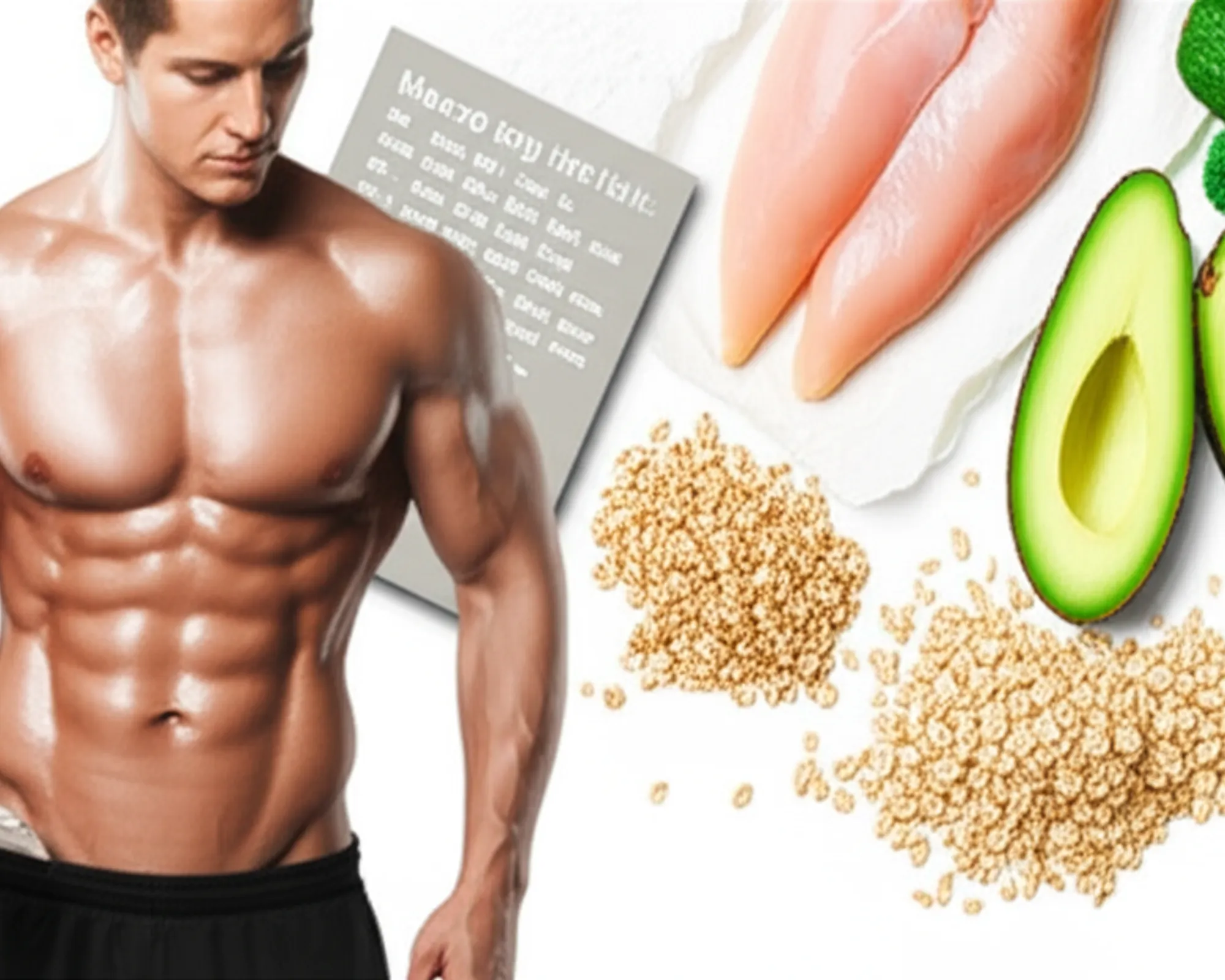Best Gym Exercises for Beginners (Step by Step)

Your Ultimate Guide to Starting Strong: Best Gym Exercises for Beginners
Stepping into a gym for the first first time can feel overwhelming. Rows of machines, clanking weights, and seasoned gym-goers might make you feel a bit out of place. But every fitness journey starts with that first step! This guide is designed to demystify the gym for you, providing a clear, step-by-step approach to the best exercises for beginners. Our focus is on proper form, safety, and building a solid foundation.
Before You Begin: Essential Preparations
Before diving into exercises, remember these crucial points:
- Warm-Up (5-10 minutes): Light cardio like walking or cycling, followed by dynamic stretches (arm circles, leg swings) prepares your muscles and joints.
- Listen to Your Body: It’s okay to feel a challenge, but pain is a warning sign. Stop if something hurts.
- Hydration: Drink water before, during, and after your workout.
- Start Light: Prioritize learning proper form with light weights or just your bodyweight before adding resistance.
Part 1: Foundational Bodyweight Exercises
Bodyweight exercises are excellent for building strength, stability, and mastering movement patterns without external resistance. They are your starting point.
1. Bodyweight Squat
The squat is a fundamental movement pattern crucial for daily life and athletic performance.
- Step 1: Stand tall with your feet shoulder-width apart, toes pointing slightly outward. Keep your chest up and shoulders back.
- Step 2: Engage your core. Initiate the movement by pushing your hips back as if you are going to sit in a chair.
- Step 3: Lower yourself until your thighs are parallel to the floor, or as deep as comfortable while maintaining good form. Ensure your knees track in line with your toes and don't collapse inward.
- Step 4: Push through your heels to return to the standing position, squeezing your glutes at the top.
2. Push-up (Modified: Knee or Incline)
The push-up builds upper body pushing strength. Beginners should start with modifications.
- Step 1 (Knee Push-up): Start on your hands and knees, hands slightly wider than shoulder-width apart. Ensure a straight line from your head to your knees.
- Step 1 (Incline Push-up): Place your hands on an elevated surface (like a bench or sturdy table) slightly wider than shoulder-width, body in a straight line from head to heels.
- Step 2: Engage your core and glutes. Lower your chest towards the floor (or surface) by bending your elbows, keeping them close to your body.
- Step 3: Push back up to the starting position by extending your arms, maintaining a straight body line.
3. Plank
An excellent exercise for building core stability and strength without movement.
- Step 1: Start in a push-up position, then lower down onto your forearms. Your elbows should be directly under your shoulders.
- Step 2: Form a straight line from the top of your head through your shoulders, hips, and down to your heels. Avoid letting your hips sag or pike up.
- Step 3: Engage your core tightly, as if bracing for a punch. Keep your glutes and quads squeezed.
- Step 4: Hold this position for 20-30 seconds, focusing on controlled breathing. Gradually increase hold time as you get stronger.
Part 2: Beginner-Friendly Machine Exercises
Gym machines are fantastic for beginners as they guide your movement, making it easier to learn proper form and isolate muscle groups safely.
1. Leg Press Machine
Targets your quadriceps, hamstrings, and glutes with controlled movement.
- Step 1: Adjust the seat so your knees are at a 90-degree angle when your feet are on the platform. Place your feet shoulder-width apart in the middle of the platform.
- Step 2: Release the safety catches. Keep your lower back pressed firmly against the pad.
- Step 3: Lower the platform by bending your knees until they are close to your chest, ensuring your lower back remains stable.
- Step 4: Push through your heels and the balls of your feet to extend your legs back to the start, but do not lock your knees at the top. Control the descent.
2. Chest Press Machine
Works your chest, shoulders, and triceps, mimicking a bench press.
- Step 1: Adjust the seat height so the handles are at mid-chest level when seated with your back flat against the pad.
- Step 2: Grasp the handles with an overhand grip, slightly wider than shoulder-width.
- Step 3: Push the handles forward, extending your arms until they are almost straight, but do not lock your elbows. Focus on squeezing your chest muscles.
- Step 4: Slowly control the handles back to the starting position, allowing your chest to stretch.
3. Lat Pulldown Machine
Excellent for building back width and strength, particularly your lats (latissimus dorsi).
- Step 1: Adjust the knee pad to secure your lower body firmly. Reach up and grasp the wide bar with an overhand grip, hands wider than shoulder-width.
- Step 2: Lean back slightly (about 15-20 degrees) and pull the bar down towards your upper chest, focusing on pulling with your elbows and squeezing your shoulder blades together.
- Step 3: Control the movement as you slowly release the bar back up to the starting position, feeling a stretch in your lats.
4. Seated Row Machine
Targets your mid-back muscles, improving posture and overall back thickness.
- Step 1: Adjust the seat or footplate so you can comfortably reach the handles with a slight bend in your knees. Sit upright with your chest proud.
- Step 2: Grasp the handles (often a V-bar or close grip) and lean slightly forward, maintaining a straight back.
- Step 3: Pull the handles towards your lower abdomen, squeezing your shoulder blades together. Keep your elbows close to your body.
- Step 4: Slowly release the handles back to the starting position, allowing a slight stretch in your upper back without rounding your spine.
5. Overhead Press Machine
Develops shoulder and tricep strength in a safe, guided motion.
- Step 1: Adjust the seat so the handles are roughly at shoulder level when seated with your back against the pad.
- Step 2: Grasp the handles with an overhand grip, slightly wider than shoulder-width.
- Step 3: Press the handles straight overhead until your arms are fully extended, but do not lock your elbows.
- Step 4: Slowly lower the handles back to the starting position, controlling the movement throughout.
Part 3: Introducing Light Free Weights
Once comfortable with bodyweight and machines, you can gradually introduce light free weights. They require more stability but offer greater functional strength.
1. Dumbbell Goblet Squat
A great way to load the squat pattern safely and effectively.
- Step 1: Stand with your feet shoulder-width apart, holding one dumbbell vertically with both hands against your chest (like a goblet).
- Step 2: Keep your chest up, core tight, and back straight.
- Step 3: Lower into a squat, keeping the dumbbell close to your body and your elbows tracking inside your knees.
- Step 4: Push through your heels to return to standing, squeezing your glutes.
2. Dumbbell Bench Press (on a flat bench or floor)
Builds chest, shoulder, and tricep strength with more freedom of movement than a machine.
- Step 1: Lie on your back on a flat bench (or the floor for added stability), holding a dumbbell in each hand above your chest, palms facing each other or slightly forward.
- Step 2: Lower the dumbbells slowly to the sides of your chest, keeping your elbows at about a 45-degree angle from your body.
- Step 3: Push the dumbbells back up to the starting position, squeezing your chest at the top.
3. Dumbbell Single-Arm Row
Works your back and biceps in an effective, unilateral (one side at a time) fashion.
- Step 1: Place your left knee and left hand on a flat bench, keeping your back straight and parallel to the floor. Your right foot should be firmly on the ground.
- Step 2: Hold a dumbbell in your right hand, arm extended towards the floor. Let the dumbbell hang naturally.
- Step 3: Pull the dumbbell up towards your right hip, squeezing your right shoulder blade at the top. Keep your elbow close to your body.
- Step 4: Slowly lower the dumbbell back down to the starting position. Complete all reps on one side before switching to the other.
Part 4: Adding Cardio to Your Routine
While strength training is crucial, don't neglect cardiovascular health. For beginners, simple options are best:
- Treadmill: Start with brisk walking (3.0-4.0 mph) or light jogging.
- Elliptical: A low-impact option that works both upper and lower body.
- Stationary Bike: Great for leg endurance and easy on the joints.
Aim for 20-30 minutes of moderate intensity cardio 2-3 times a week on non-strength training days, or after your strength workout.
Part 5: Essential Tips for Beginner Success
Your journey is just beginning. Keep these tips in mind to stay motivated and make continuous progress:
- Consistency Over Intensity: Showing up regularly, even for shorter workouts, is more effective than sporadic, intense sessions.
- Focus on Form: This cannot be stressed enough. Correct form prevents injuries and ensures you're working the intended muscles. Watch videos, use mirrors, and don't hesitate to ask gym staff for a quick form check.
- Progressive Overload: To keep getting stronger, you need to gradually challenge your muscles more over time. This could mean adding a little weight, doing more reps, or adding an extra set.
- Rest and Recovery: Muscles grow when they rest. Aim for 7-9 hours of sleep and give muscle groups 24-48 hours to recover before working them again.
- Nutrition and Hydration: Fuel your body with balanced meals and stay well-hydrated. This supports energy levels and muscle repair.
- Don't Compare: Everyone's journey is unique. Focus on your own progress and celebrate your small victories.
- Consider a Trainer: Even a few sessions with a certified personal trainer can provide invaluable guidance, personalize a plan, and correct your form.
Conclusion: Embrace Your Gym Journey!
Starting at the gym is a significant step towards a healthier, stronger you. Remember that consistency, proper form, and patience are your best allies. Don't be afraid to experiment with different exercises as you gain confidence, and always prioritize your safety. Welcome to the world of fitness – your journey to a stronger you begins now!


